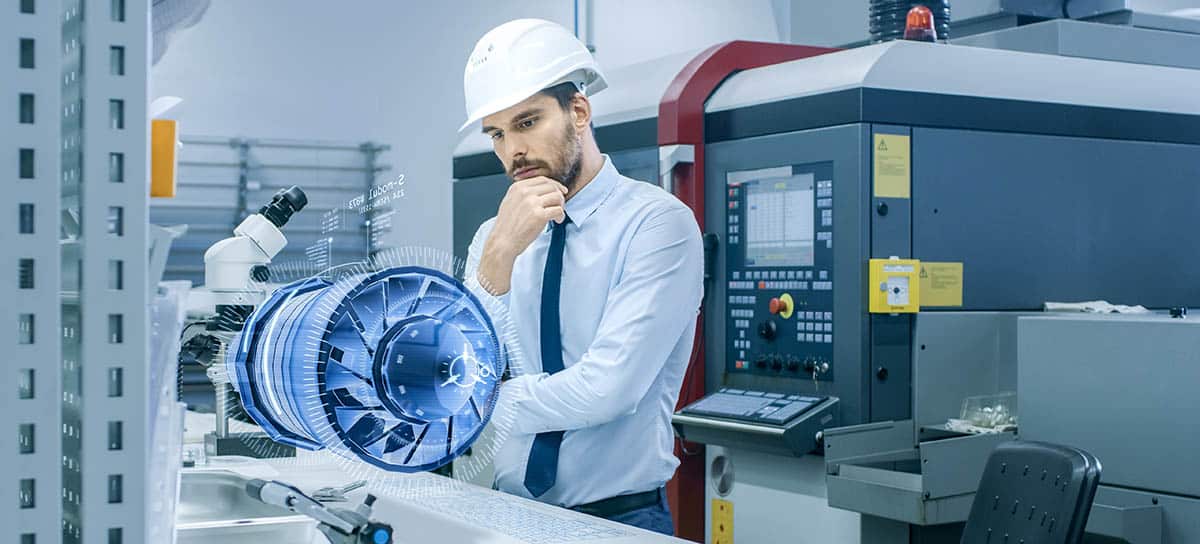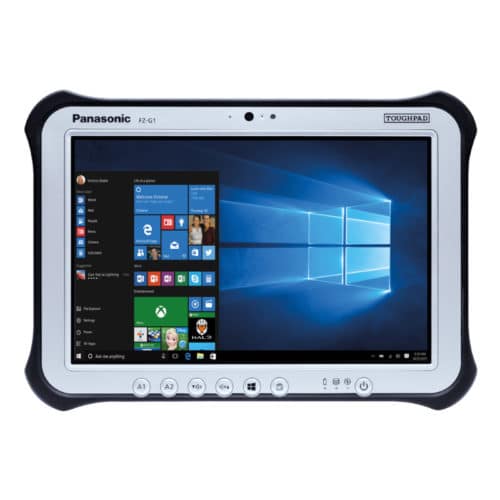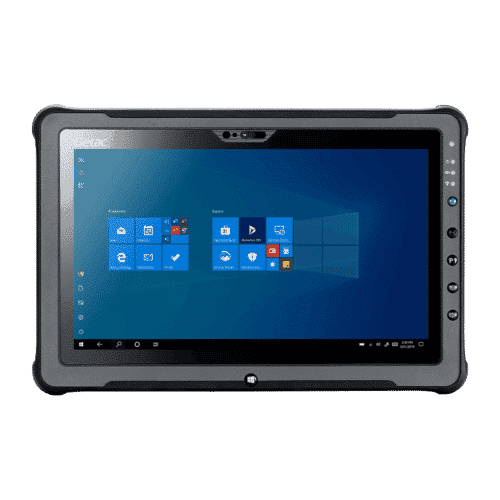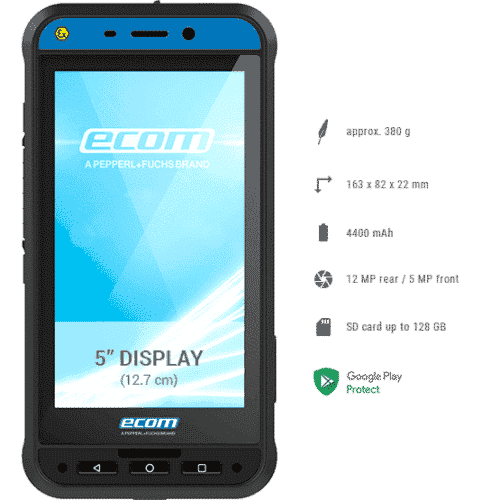Augmented reality is a great invention. We at ALEGER are always fascinated by the many different applications and possibilities. We want to share our enthusiasm with you: How does augmented reality work, where is it used and why is it the technology of the future?

What is Augmented Reality or AR?
Augmented Reality means “extended reality” in German and, as the name suggests, adds something to our reality. These extensions can be sounds, even smells or touches – the important thing is that they were artificially generated with the help of computers.
But what exactly is augmented reality or AR? Surely the app “Pokémon Go” means something to you. Perhaps you have children of your own and watch in amazement as your offspring gather with others in the strangest of places just to stare at their smartphones together?
The popular mobile game is one of many examples of augmented reality that expands our visual perception. So not only do we see all the trees, streets and houses around us, but – as soon as we use a display like our cell phone or tablet for this purpose – we also see other elements.
These can be little Pokémons, as well as information boards in museums, prices in stores, directions on Google Maps, or marking historical locations on city tours… Such extensions are put on top of reality as an extra layer in AR.
Virtual and Augmented Reality
Augmented reality is often mentioned together with virtual reality. Other terms are Mixed Reality and Assisted Reality. Confused? In fact, it is not so easy to clearly distinguish everything from each other. Because like any other innovative and forward-looking invention, immersive technologies are constantly evolving.
Virtual reality or VR does work similarly to AR when it comes to producing relevant content. But in application, the two differ greatly: while in AR we see the real world around us, only with additional elements, the goal of virtual reality is maximum immersion.
With VR glasses, the outside world is completely blanked out and replaced by a virtual, three-dimensional and usually also interactive reality. This way, you can completely indulge in this new world, which makes virtual reality so popular, especially for games and movies.
Assisted Reality and Mixed Reality
Both assisted and mixed reality are forms of augmented reality and involve hardware. Again, the definitions are not always the same and you may find different explanations elsewhere.
Assisted reality is predominantly mentioned in connection with data glasses. With assisted reality, information appears on a display in such a way that it supports a process or a work step – in other words, assists the user in the best possible way. These are mostly simple 2D graphics such as operating instructions for machines or route information for a car journey.
Mixed reality, on the other hand, requires more powerful mixed reality glasses. Because here, augmented reality is not just superimposed on reality like an additional layer, but interacts with it. This means that a virtual 3D object, for example a ball, can fall off a real table or become invisible when it rolls behind the sofa.
Accurate information and some understanding of the environment are necessary for such representations. The AR glasses scan the room and all objects in it and generate a virtual, three-dimensional image as the basis for all interactions.

AR Hardware
As already mentioned above: The hardware’s equipment and computing power determine which types of advanced displays are possible. Because when it comes to AR hardware, the differences are huge – depending on what you’d like to use AR for.
In fact, AR can be used with very many devices and has become much more prevalent in our everyday lives than VR. The best known is certainly the application on smartphones and tablets: In addition to “Pokémon Go,” there are countless apps in the stores that offer augmented reality functions. Funny Instagram filters are just one example among many. AR apps on mobile devices are also already being used successfully in industry and retail.
At ALEGER you will find a wide range of smartphones and tablets for industry.
-

Panasonic FZ-G1, rugged tablet MIL-STD 810G, 10.1 inch HD display, IP65, Windows 10
€3.699,99excl. 20% VAT
zzgl. Shipping Costs
In den Warenkorb -

Getac F110, rugged tablet, IP65, MIL-STD-810G,11.6 inch, Windows 10 Pro
€2.499,99excl. 20% VAT
zzgl. Shipping Costs
In den Warenkorb -

ecom Smart-Ex 02 DZ1, Ex-protected smartphone for ATEX Zone 1, 5″ touchscreen, Android
€2.338,00excl. 20% VAT
zzgl. Shipping Costs
In den Warenkorb
However, a smartphone is not the only AR hardware: Glass surfaces such as windows or glass doors can also become smart displays and show digital content. Particularly useful in this context are so-called Head-up displays (HUD), which are used as windshields in cars or in the cockpits of airplanes. This means that important information is always in view during the journey or flight.
Directly on the head, on the other hand, one wears Head-mounted displays (HMD). These are data glasses and augmented reality headsets, also called mixed reality glasses, AR glasses or smart glasses. There are some specifics here, depending on what the AR hardware will be used for and how.
Smart Glasses
Before you buy augmented reality glasses, it is therefore helpful to know the differences and possible application scenarios. Because this is such a big topic and the constantly evolving market is quite confusing on top of that, we have the Smart Glasses dedicated a separate article.
Smart Glasses are controlled via voice commands, touching the hardware or gestures in the field of vision. Basically, a distinction is made between 2D and 3D-capable AR hardware for all head-mounted displays. Many data glasses with 2D displays are monocular, i.e. worn over one eye only. 3D-capable AR glasses are always binocular and thus cover both eyes.
Both variants have their advantages. Monocular smart glasses such as the HMT-1 from Realwear score with high battery performance, robust design according to industry standards and easy handling. Binocular smart glasses cost more and are not quite as robust as the monocular devices. However, they usually have more computing power and a wider field of view.
Some AR glasses even offer spatial tracking and can process spatial data using depth sensors. This is quite crucial if you are dealing with 3D objects and want to display 3D CAD data or even work with AR content in a team. These particularly powerful models also have 3D sound integrated, making augmented reality seem even more realistic. Examples are the Hololens 2 from Microsoft or the Magic Leap .
Here you will find a selection of our top-selling smart glasses.
Other well-known companies such as Google, Apple, Facebook and Samsung are also already developing or marketing their own smart glasses, albeit with quite different features, uses and target groups.

AR Software
The most beautiful device is nothing without the right interior. The second building block besides the AR-enabled hardware is the Augmented Reality Software . This does not always have to be custom programmed. Because even for professional users, there is already a large selection of augmented reality apps that support various areas of working life – and are ready to use right away.
Broadly speaking, AR software has the task of processing information about the real environment provided by the sensors of end devices such as smartphones or AR glasses and combining it with computer-generated content. This is the basis, for example, for fixing a virtual object in space so that the user can move around it. It also makes it possible for multiple users to work on AR content simultaneously. In addition, AR extensions can be placed over real objects with a precise fit.
So with the help of augmented reality apps, a black-and-white photo can suddenly shine in bright colors, the right button on the machine can light up, the desired tattoo can be examined in advance on the arm, or the new house can stand on the lawn as planned even before it has been built.
Want to learn even more about augmented reality software?
Smart Maintenance and Augmented Reality
One of the most exciting application areas for AR is Smart Maintenance . In the age of Industry 4.0. it goes with the Maintenance long since ceased to be about eliminating problems when they occur. Instead, digital processes and data ensure that the core areas of inspection, maintenance and repair are more up-to-date, efficient and, above all, predictive. So, in the best case, you find the error before it leads to a failure.
This data, as it can be compiled in corresponding software, can be shown not only on displays in smartphones and other end devices. Smart glasses can also display information such as orders, controls and measurement data. The user has his hands free while working and keeps the overview.
Learn more about AR Software here
Data glasses as a remote maintenance tool
It is a special case when not all employees can always be on site. Be the reason a worldwide pandemic, travel restrictions or simply high travel costs: In the Remote maintenance With the appropriate software, it is no longer necessary to send out experts in demand for maintenance work or to solve problems.
If an on-site employee wears data glasses, the remote expert can follow their work live from their office. He sees what the employee sees on site and can give appropriate tips and instructions. With augmented reality and professional Remote maintenance tools you can display notes and construction plans in the field of view or mark specific objects. This way, the employee on site knows immediately which is the right switch.

Augmented Reality: Fields of application
Basically, one can say: There are few areas in which augmented reality could not be used in a meaningful way. Both in the consumer market and in the business context, there are already plenty of examples of successful AR Applications.
AR software solutions are useful in education, can be used in logistics, industry, retail, construction, real estate or marketing. Even in agriculture, AR is already being used in isolated cases. Some companies, such as car manufacturers, use AR in development and production. Art, literature and media are also experimenting with AR applications. In the following, we would like to show some particularly exciting use cases.
Interesting examples of AR
Examples of successful augmented reality applications have long been found in our everyday lives – even beyond AR games like “Pokémon Go”. The furniture store IKEA, for example, offers a wonderful way to place furniture in your own home via AR with its “IKEA Place” app. So you can quickly and easily test how an armchair will do in the living room and whether the space provided for it is enough.
Augmented reality is also very practical for orientation: In Google Maps, “Live View” can be activated for route guidance on foot. The smartphone’s camera now searches for conspicuous environmental markers, such as a tall house, and thus locates the user in the cityscape. The waymarking can then be projected directly onto the real road, so that getting lost should finally be a thing of the past.
Admittedly, the agricultural sector does not yet use AR intensively. Nevertheless, one example is very nice: because the herd management of dairy cows has also long been possible digitally. With the “CowControl” application running on Hololens AR glasses, dairy farmers can keep an eye on important data about their cows, such as health status and movement behavior, right in the barn.
Things don’t always have to be so practical. Sometimes AR is just for the eye: Very well known in the art scene, for example, are the works of the French artist duo Adrien M. & Claire B. Using an app, pop-up books or artworks come to life and show interesting visual effects or little stories in black-and-white augmented reality. A principle, by the way, that is also being used more and more for children’s books.
Augmented Reality in Industry 4.0
In addition to Smart Maintenance with AR support, there are other interesting examples of how Augmented Reality can be usefully applied to processes of digitization in industry. Already during the planning of a factory, plants, production lines and escape routes can be modeled in 3D and displayed on site in a hall using AR. In this way, it is possible to test in advance where a machine is positioned correctly, whether the distances are correct and whether the overall space planning works out.
Once everything is planned, the commissioning of machines and their maintenance is possible with the help of data glasses: As with remote maintenance, an employee gives his colleague tips remotely via the software. In this way, services that a company offers its customers can also be provided more quickly and efficiently in remote support or recorded for training purposes using data glasses and practiced later.
In addition, AR can bring benefits to development and production, meaningfully structuring and displaying data and Workflows optimize. We explain some of the most frequently mentioned terms in more detail here:

Business Intelligence
Big Data, artificial intelligence, machine learning and process optimization – just some of the buzzwords mentioned in connection with business intelligence. But especially large, multi-dimensional data sets and complicated relationships are often better understandable and, above all, more meaningful when displayed spatially. Gone are the days of two-dimensional bar charts. Augmented and virtual reality help here to visualize large amounts of data, to integrate it into the daily work process and to lay the foundation for successful business decisions.

Smart Factory
Even the digital factory, the Smart Factory , works with any amount of data. All machines, tools and work steps are networked and connected to administration, logistics and sales. In this way, all machines can be utilized to their full capacity, production can be increased in the long term, and changes can be safely tested in advance in simulations. Augmented reality also displays important information in real time and on the spot. For example, with the help of AR, an employee can perform changeovers of machine parts quickly and efficiently, ensuring more flexible production of different parts.

Smart Building
The lighting system, the heating, the ventilation system, the power supply, the sanitary facilities or the control of visitor flows: specialist personnel are needed to manage large buildings well in the digital age. Intelligent solutions make building technology safer, its design and construction simpler, and its management more cost-efficient. With AR, for example, water pipes, heating shafts and circuits can be displayed as full-size 3D models and help avoid conflicts during construction. Later, the inspector or service technician can view maintenance schedules and checklists, as well as use AR indoor navigation to quickly get to their destination.

Digital Engineering
Production in Industry 4.0 can also be simplified with AR: with Digital Engineering you simplify product development and prototype design, for example. With the help of augmented reality, this can be done much faster and is already being used at BMW, for example. Quality control can also be optimized with AR: If the true-to-scale 3D models are placed precisely over parts that have already been produced, an actual-target comparison can be carried out easily and errors can be detected quickly.
Here is more about the augmented reality application areas in the industry.
Augmented reality in retail and sales
Especially in the sales area, immersive technologies like VR and AR are a real asset. While small products can be brought to the customer quickly for demonstration purposes, this is difficult or impossible with very large products such as aircraft or machinery. Customized models, which are still being manufactured according to customer specifications, can also be demonstrated in advance.
Beyond B2B, retail in particular can benefit enormously from augmented reality – especially online retail. With AR technology and other features such as facial recognition, customers can, for example, try on glasses and virtually put on expensive jewelry before buying.
Do you already have experience with digital price tags? What sounds like a science fiction movie offers huge potential for brick-and-mortar retail. Store owners can use AR to show their in-store customers prices of the merchandise on display or alternative color options on their smartphones. Augmented reality can also be used to draw attention to offers and recommendations.
Augmented reality in medicine
Similar to how building technicians and engineers can project three-dimensional data onto walls and engines, medical professionals use 3D data for surgeries. These can be placed over the patient as AR elements to match the anatomy, making it easier to access important information before and during an ongoing surgery.
A particularly important area in medicine is continuing education. In VR and AR training scenarios, tricky steps can be practiced that rarely occur in everyday life. This allows improbable but possible extreme situations to be simulated for students and physicians and repeated as many times as necessary. If such a complication or emergency does occur, the right moves are made.
In summary, augmented reality is an asset in almost every area of life and business. In many contexts, the technology is already being used with success, contributing to greater efficiency and safety. And yet this is just the beginning: with more precise spatial representations and better computing capacity through cloud computing and other innovations, immersive technologies will continue to revolutionize the way we live and work in the near future.

